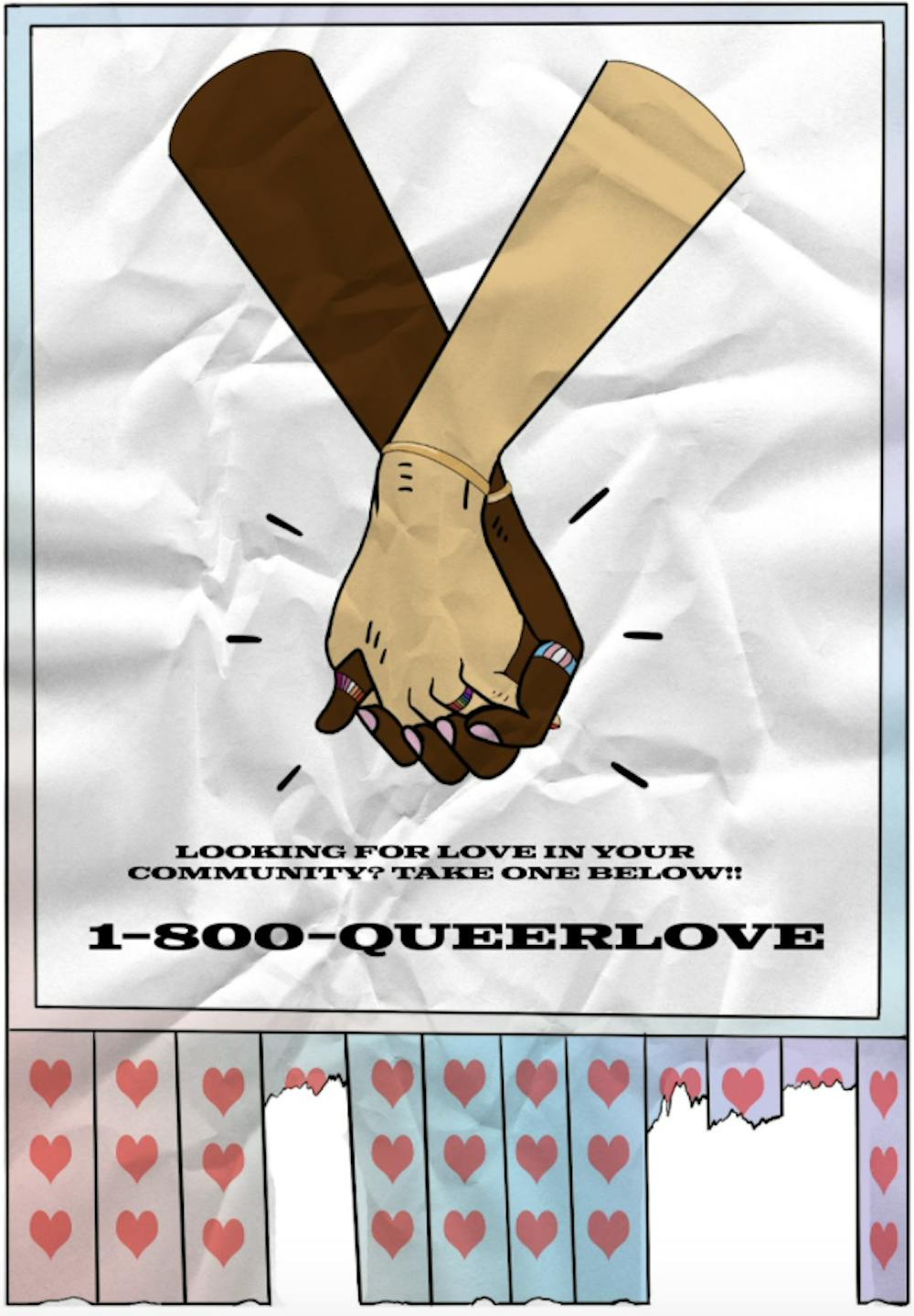By Isabel Smith
Correspondent
Dating in 2023 can be hard enough, but is it harder for college students that are also a part of the LGBTQIA+ community?
After the pandemic, dating has shifted to primarily online apps, which has improved queer visibility but may have hindered the way connections are built. Three students at the College discussed the uphill battle of entangling oneself in the queer dating scene on campus.
According to a study by Williams Institute at UCLA, only 4.1% of the population in New Jersey identify as being in the LGBTQIA+ community. With ages 18-24 making up 32% of the queer community in New Jersey, lodging in at the highest percentage, college-age students dominate this statistic. Despite this fact, some students perceive dating to be impossible.
“I just don’t really know how to do it [dating] at all,” said Emily Madeira, a junior interactive multimedia major.
One common challenge revolves around identifying who exactly is a member of the community as opposed to an ally. For Madeira, this is a huge problem that arises when dating in the LGBTQIA+ community.
“You don’t know who is gay and who isn’t,” said Madeira. “I get a little bit nervous about assuming or guessing so that makes it harder.”
Milo Stark, a transgender polyamorous person, who is completing their first year as an interactive multimedia major, said they don’t think it would be hard to find others in the LGBTQ+ community.
“All queer people, whether or not we mean to, can find each other and kind of sense each other,” Stark explained. “There are calling cards to how a person dresses, acts and understands media that help.”
Stark added that they have already gotten to know a substantial amount of queer individuals in their major because of “the way we sort of feel each other out like that.”
Luca Bottitta, a nonbinary junior majoring in biology and special education, has attempted to have an active role in the dating scene on campus.
“There is no harm in ‘no,’” Bottitta explained. “If you're gonna put yourself out there and it's not received well, it won't be the only thing to happen in your day.”
In the age of dating apps like Tinder, Hinge and Bumble with options to modify your search to genders of any type (including nonbinary) and a broad spectrum of sexuality, the possibilities for dating range from your immediate area to overseas, but some still prefer the old-fashioned way.
“I definitely prefer meeting people in person,” Madeira said, noting safety as her biggest concern.
Tinder, Bumble and Hinge include a feature that verifies a person by submitting a short video selfie, using facial recognition technology to compare with pictures in the profile.
Bottitta said they have the apps downloaded but don’t use them often, explaining that they “just sort of sift them as a mild joke.”
“I find a lot of people on dating apps are into more of a hookup culture,” Bottitta added. “That’s not something I want to do anymore.”
Stark said that Tinder and Hinge “aren’t always as inclusive of a trans person, requiring these sorts of accommodations to make this app work for us,” adding that he is also concerned about safety.
Out of over the two-hundred plus clubs and organizations on campus, only one is dedicated to the LGBTQIA+ community on campus. PRISM, the college's oldest gender and sexual alliance board, serves as a haven for those in the community to talk safely in a place that welcomes them.
Bottitta stated they are aware of PRISM but find it difficult to fit in time to attend club events, and Madeira explained that it can be hard to participate in clubs as a commuter.
Comfortability and transparency are two key factors as to why it can be difficult to date on campus in the LGBTQIA+ community. Everyone has boundaries and limits when it comes to dating, and venturing out can be scary, frustrating, exciting or all of the above.
Bottitta advocates for boldness when it comes to finding new people.
“If you see that one cute girl in Eick you may never see her again,” Bottitta said. “Just do it! There's nothing else holding you back but yourself.”







